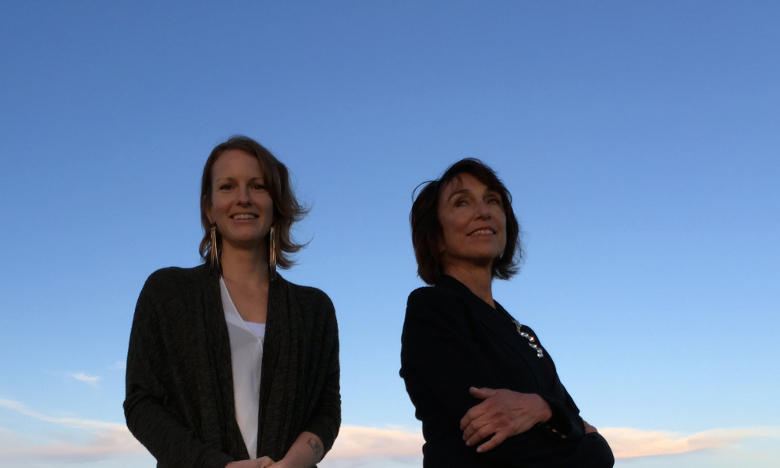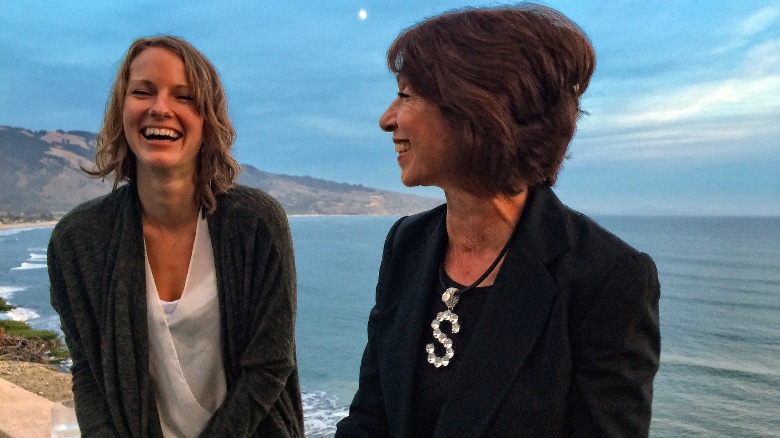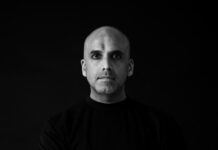Did you combine the racks or some modules for Sunergy?
KS: Yes, it was a little bit of both. It was both of us in our own set-ups and then we would take turns clocking each other and then we would feed of each other.
SC: We could integrate the two systems rhythmically. Also, we had a set of shared raw material. So each chose the sets of pitches that we would use. And we are both pitch-oriented composers and electronic performers. Some electronic music is more based on abstraction, or noise or whatever. We as composers love using pitches because we both have a classical root system. It was a lot of fun because it was in the moment and I think it really was synergetic. We complimented each other a lot of times. Kaytlin always contributed something what was needed, missing or useful. Maybe it was a bass or an improvised line above.

Was there any remarkable accident that occured which make you find something that you have not found before while you recorded together?
KS: It feel like it was all happy accidents! We kind of had, for the lack of language, like a jazz-mentality about it because we were improvising the whole time. It was all happy accidents.
SC: For my Buchla concerts from 1975 that just came out on Finders Keepers, I had written a documentation about how to perform the Buchla which was included in the collectors‘ version. I referred back to that cookbook and took this a starting point. If you listen to the 1975 concerts, it would not sound like anything Kaytlin and I did together because it was a different instrument and a different time, it was a 200, and not a 200E. There was no memory in the 200 but there was more controls. The thing about the Buchla, you know, the fascination, it was never the sound. The sound of the Moog is even is richer than the Buchla, but it was the way you could move the sound. It had a spatial controller, it had a lot of controlled voltage. It had a thing that was like a 3-D sequencer, in the MARF, the multiple arbitrary function generator. These things were complex. And the new instrument is not even as complex as the earlier one but it does have a memory.
Video: Kaitlyn Aurelia Smith & Suzanne Ciani – Closed Circuit
Speaking more metaphorically, what is then electricity to you while you are making sound with the Buchla or another synthesizer?
KS: That is one of my favourite things to think about when I am making music. When I first learned it, that was on a 100, which I am sure Suzanne has also played.
SC: Yes.
KS: At least with the one I was playing, the impedance level was just not really haunting in at this time. You could really feel these pulses of electricity. If I turned on the light switch, you could hear the difference and depending on what monitors I was using, I could hear the pumping of electricity. It feels like this live force and that is something that I first started to relate to and I come back to that thought a lot. It sounds abstract but it is my personal relationship with it.
SC: Also, for me the underlying electricity is an actual source of stability. The consistent cycling, the perfect rhythmic pulsing is something that I think has a subliminal comfort and allows us to feel secure and relaxed.
KS: Oh, that is so interesting. I like that.
That is a good transition to electronic club music. Techno has this steady pumping and pulsing beat.
SC: Yes, that is all wonderful. And yes, I think Techno is based on that pumping stability. But for me it is just too one-dimensional because as a composer I just like more… I don’t want to say complex, it is not about complexity. It is about a menu. If you go for dinner, you don’t want to eat just carrots.
KS: That makes me think about when you were first asking about why modulars. I grew up playing African music and so poly-rhythms have always been where my foundation is, rhythmically. Modulars really help you play those as one person, because usually you would need multiple people to play that.





